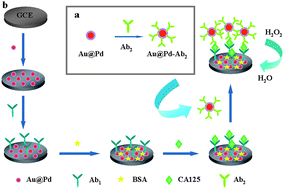An ultrasensitive enzyme-free electrochemical immunosensor for CA125 using Au@Pd core–shell nanoparticles as labels and platforms for signal amplification
Abstract
A facile and sensitive enzyme-free sandwich-type immunosensor for the detection of carbohydrate


 Please wait while we load your content...
Please wait while we load your content...